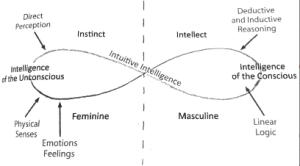Once we start moving in a certain direction or doing something a certain way it is hard to stop or change. That is inertia. And while this is true for individuals, it is even stronger in a group dynamic. If you want to innovate, you need to change. And in order to effect change you need to overcome the natural tendency toward  inertia.
inertia.
Arie de Geus, an ex-Shell executive turned consultant, has researched why certain companies over one hundred years old have been so successful. The 27 companies he studied were able to successfully get past inertia, sustain themselves, and grow over time. They managed to withstand economic changes while staying true to their mission, without resorting solely to the tactic of acquiring companies to stay afloat in their market. He found three characteristics common to these successful companies:
- They practice fiscal conservancy.
- They are open to new ideas from both inside and outside the organization.
- They have established a strong community of values that resonates with their employees, making them feel they can take risks and not be fired if they don’t succeed—the feeling of belonging to a community helps overcome the fear of failure and the anticipation of potential negative consequences at a personal level.
Although point one relates to classic best practices in business, points two and three tell us why play—something not in the typical business best-practices toolbox—is key in a work culture to ensure the longevity of an organization. Openness to new ideas and a fundamental level of trust are inherent in a playful atmosphere, and play is an essential ingredient in generating innovative ideas.
It is relatively easy to see how play can generate fabulous new ideas, but what is less obvious is the critical role of play in giving those ideas a chance at life against some very serious odds. Innovation is change, and change sends many of us running for cover—for good reason. Change activates our survival instincts and is at least partly responsible for our tendency toward inertia, and inertia, again is a serious barrier to innovation.
Experts agree that the critical stage of innovation is implementation. Implementation is where the rubber meets the road. It requires us to change our behavior, and changing behavior is not only an intellectual but also an emotional challenge. It also requires us to step into the unknown. But perhaps the greatest challenge is that it requires us to overcome inertia, and that is something that humans are hardwired to resist. That hardwiring is key to understanding how inertia works and what its function is.
The human brain wants to stay where it is, in the comfort zone. If we stay in our comfort zone, we don’t have to struggle to survive. We minimize the risk to our survival by staying where we know we are safe. I often explain to my MBA students that the reason they take the same seat in class every week, and the reason we lay our towels in the same area of the beach every summer weekend, is that we are, at our core, instinctual animals. Once we have chosen a seat and made it through class safely without being attacked, the part of our brain responsible for our survival tells us that our best option is to repeat that behavior, because in a way it is the most economical use of our energy. As part of its strategy for survival, our brain wants to conserve energy, so once we sit in a particular spot and know that it’s safe, we will subconsciously want to sit there every time and avoid having to reevaluate the safety of a new spot.
In a group, because relationships add complexity, inertia grows exponentially more difficult to overcome. My inertia plus your inertia is more that 1 + 1 = 2, and when we add a half-dozen colleagues or try to take on a company with hundreds or thousands of employees, the task is truly formidable. Even if Kim decides she is ready to be brave and try a new way of organizing the Monday morning meeting, all of a sudden she confronts the realization that her change will affect her staff members. What if they don’t like her new approach to meeting protocol? Will they refuse to cooperate? Stop having lunch with her? Go over her head, complain to her boss, and expose her to a negative performance review? Kim has a problem. How can she try something new without so unnerving her colleagues that they stonewall a potentially good idea before it ever gets off the ground?
So, in addition to the natural preference for staying with a mode of being that has proven itself to be safe, getting past inertia is also difficult because of the emotional reaction of others. You have to show people that change will be beneficial to them; you have to make it both non-threatening and inspiring. Play is key to overcoming the emotional component of inertia.
You are probably familiar with the saying that you must fight fire with fire. Dr. Stuart Brown, head of the National Institute for Play, concluded, after years of research, that “play is no less important than oxygen…it’s a powerful force in nature that helps determine the likelihood of the very survival of the human race.” When we realize that the part of our brain that is responsible for our survival (the fight-or-flight response) is the same part of our brain that contains our capacity for play, it puts play in a new, more powerful, and clarifying light.
Play in face lives eye-to-eye with inertia; both are rooted in our brainstem, where you also find the part of the brain responsible for our survival. Play and inertia are in the same weight class, peers in a very exclusive executive suite where core strategic decisions about our present and future are made. But they are having a little war. Inertia, the more conservative of the two, believes that the smart move is to not move at all, to stay with the plan that got us this far safely. Play, the wild child, wants to dream a little dream, take the afternoon off, find Atlantis and create a new society there, because sitting here is, quite frankly, killing its buzz.
Play—our wildly creative and childlike nature—opens the emotional door. It offers an arena in which people become naturally more flexible. For example, think about music. You go to a rock or jazz concert and when the music starts you may sit or stand quietly, taking it in, being polite, and heaving appropriately. But over the course of the evening the music takes you over and you become more comfortable, then relax; you may start tapping your foot or swaying in time with the beat, or even dancing spontaneously with the stranger next to you. Your behavior just changed without any effort on your part. This is the magic of play. Knowing that play is rooted in the same brain area as our instinct for survival is a good enough reason to give it the benefit of the doubt.
One you let the genie out of the bottle, once play is in full swing and inertia banished (at least at that particular moment), things can move fast This is especially true with a large group, because just as it is harder to move a group out of its inertia, once the groups does get moving, it can be a force to be reckoned with—in the best possible way. Then the challenge transforms into how to manage your newly creative, very energized team. How to channel their creativity into the winning innovations your company seeks without putting a damper on their enthusiasm. Playful energy will beget as many dead ends and failures as it will successes. You have to be able to tolerate this, and you have to create an atmosphere in which your team will be able to tolerate it—even better, embrace it.
 We attempt to interact with one another and arrange our institutions in hierarchical pyramids because we have been taught that the world fundamentally operates according to physical laws that believe that our minds can and should operate in a hierarchical way, with reason directing feeling and instinct. But that thinking doesn’t match up with reality.
We attempt to interact with one another and arrange our institutions in hierarchical pyramids because we have been taught that the world fundamentally operates according to physical laws that believe that our minds can and should operate in a hierarchical way, with reason directing feeling and instinct. But that thinking doesn’t match up with reality.








